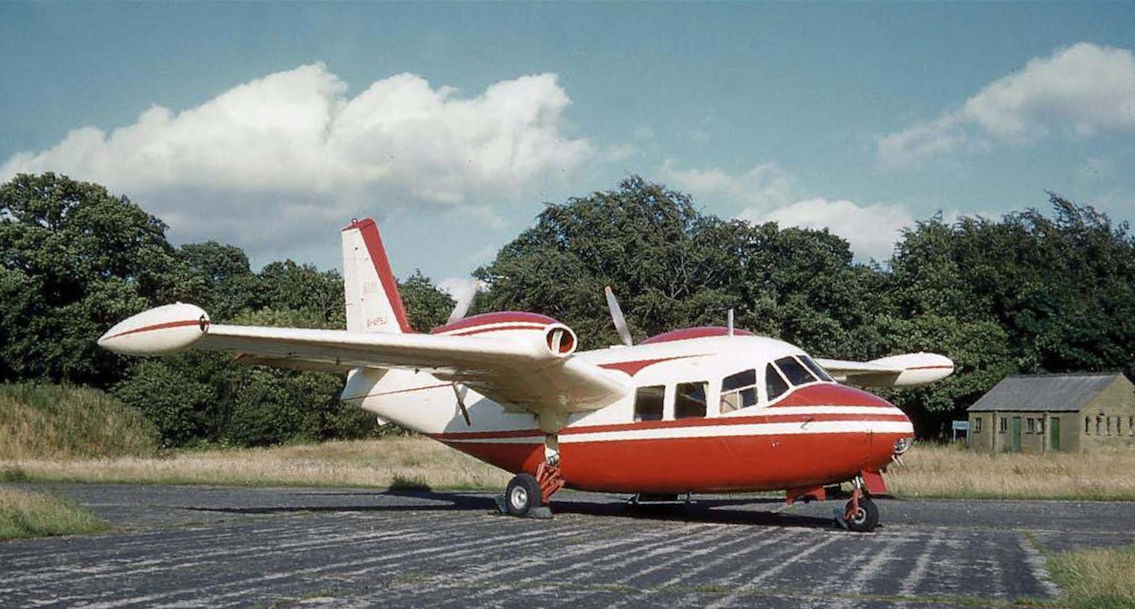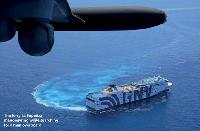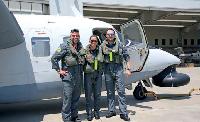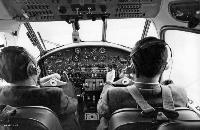
Варианты
- Piaggio - P.136 - 1948 - Италия
- Piaggio - P.166 Portofino - 1957 - Италия
Piaggio P.166
Прототип Piaggio P.166 совершил первый полет 26 ноября 1957 года, он проектировался как легкий гражданский транспортный самолет с применением крыла и конструкции силовой установки по типу самолета P.136-L.
Двигатели Avco Lycoming GSO-480 мощностью 340 л. с. (254 кВт) были установлены на свободнонесущем высокорасположенном крыле типа "чайка" и вращали толкающие воздушные винты. Самолет имел убирающееся трехопорное шасси и однокилевое вертикальное оперение с форкилем. Хорошая управляемость обеспечивала ему возможность маневра на небольших аэродромах, а дальность полета могла быть увеличена при применении сбрасываемых топливных баков. Первые 32 самолета P.166 поступили к гражданским операторам, причем поздние модификации имели более мощную силовую установку и большую пассажировместимость.
Варианты
P.166: первая серийная модель; широко продавалась и применялась в Австралии, Новой Гвинее и в США (дистрибутор - компания "Tracker Corporation"); два пилота и до шести пассажиров
P.166B: создан в 1962 году и получил название Portofino; установлены двигатели с непосредственным впрыском Avco Lycoming IGSO-480 мощностью 380 л.с.; построено шесть машин, в основном на экспорт
P.166C: имел измененный центральный отсек фюзеляжа с дополнительной кабиной для пяти пассажиров и новое шасси, основные стойки которого убирались в обтекатели по бортам фюзеляжа; серийный выпуск начат в 1964 году
P.166M: военный вариант; построен 51 экземпляр для ВВС Италии - для связи и транспортировки на поле боя; был усилен пол и увеличена грузовая дверь
P.166S Albatross: 20 самолетов приобретены ЮАР для берегового патрулирования и поисково-спасательных операций
P.166BL2: установлены двигатели IGSO-540-A1H мощностью 380 л.с., увеличен запас топлива
P.166-DL3: последняя серийная модель; прототип совершил первый полет 3 июля 1976 года, оснащался двумя ТВД Avco Lycoming LTP 101; возможность быстрой конвертации в различные варианты; два самолета использовались авиакомпанией "Alitalia" в качестве учебных, а два - Воздушным корпусом Сомали в качестве военно-транспортных
P.166-DLR-MAR: морской патрульный вариант самолета P.166-DL3; предназначен для использования в любых погодных условиях и время суток, может взлетать с неподготовленных ВПП, оборудован системой поиска, обнаружения и идентификации целей
ТАКТИКО-ТЕХНИЧЕСКИЕ ХАРАКТЕРИСТИКИ
Piaggio P.166-M3
Тип: легкий транспортный самолет
Силовая установка: два ТВД Avco Lycoming LTP101-600 мощностью по 599 л. с. (447 кВт)
Летные характеристики: максимальная скорость на высоте 3050 м - 400 км/ч; практический потолок 8840 м; максимальная дальность 2035 км
Масса: пустого снаряженного 2650 кг; максимальная взлетная 4300 кг
Размеры: размах крыла с концевыми топливными баками 14,69 м; длина 11,88 м; высота 5,00 м; площадь крыла 26,56 м2
- Описание
Фотографии
-
Мировая Авиация 213
Морской патрульный самолет Piaggio P-166S Albatross из 27-й эскадрильи ВВС ЮАP.
-
Aviation Historian 27 / E.Wild - Don't spare the horses!
Регистрационный номер: G-APSJ McAlpine Aviation operated a number of Piaggio P.166s, the first of which was G-APSJ (c/n 354), which was sold in 1963 to Air Charter of Perth, Australia. With its cranked gull-wings and pusher engines, the type was unusual - and popular with its pilots, despite being given the nickname “the Pig”.
-
Aviation Historian 5 / E.Wild - West Africa Wins Again ... or pigs can fly
The author beside The Pig at Hastings Airfield, near Freetown, in 1966. The initials SLST on the forward fuselage beneath the cockpit window refer to the aircraft’s operator, the Sierra Leone Selection Trust. McAlpine Aviation at Luton, for which the author was working, had been the official UK agent for Piaggio since May 1959.
-
Aviation Historian 5 / E.Wild - West Africa Wins Again ... or pigs can fly
Регистрационный номер: 9L-LAF [2], 5N-ADP [2], G-AWWJ [2] The Pig heading south-east down the coast from Lungi Airport to Hastings for a night-stop in Freetown. In December 1968 the aircraft was put on the British civil register as G-AWWJ, but was cancelled five months later to be put on the Swiss register. It was then sold in February 1970 to a new owner in Nigeria, where it became 5N-ADP.
-
Aviation Historian 5 / E.Wild - West Africa Wins Again ... or pigs can fly
Регистрационный номер: 9L-LAF [2], 5N-ADP [2], G-AWWJ [2] “The Pig” - Piaggio P.166M 9L-LAF, c/n 406, undergoing maintenance at its base at Yengema, Sierra Leone, in 1966. The unconventional gullwinged utility aircraft of pusher configuration was a development of the same company’s P.136 amphibian, the prototype P.166 making its first flight in November 1957.
-
Air International 2012-04 / R.Niccoli - Piaggione! /Paramilitary/
P.166BL2/APH '303-11' (MM.61929), here at Grosseto in July 1985, was one of only two of the type operated by the AMI for aerophotogrammetry.
-
Air International 2012-04 / R.Niccoli - Piaggione! /Paramilitary/
Seen in July 1979, P.166M 'SP-40' (MM.61915) was assigned to the Scuola Volo Basico Avanzato Elica at Latina, for multi-engine training.
-
Air International 2012-04 / R.Niccoli - Piaggione! /Paramilitary/
The last AMI P.166M to fly was '36- 66'(MM.61932), in June 1998. Here it poses at Cameri, in April 1997.
-
Air Enthusiast 1973-03 / ??? - Winged springbok: ... then South African Air Force today
Nine specially-equipped Piaggio P.166S Albatross twins are used by No 21 Squadron at Ysterplaat.
-
Air International 2012-04 / R.Niccoli - Piaggione! /Paramilitary/
P.166-DL3/APH MM.25157 was at Amendola in 2002, in its UN colour scheme. It had returned from an international peacekeeping mission in Eritrea earlier in the year.
-
Air International 2012-04 / R.Niccoli - Piaggione! /Paramilitary/
These 71° Gruppo P.166-DL3/APH aircraft were in action at Pratica di Mare during the unit's celebrations to mark 20,000 flying hours on the type.
-
Мировая Авиация 213
Италия сохранила P.166 для использования в качестве связного, легкого транспортного, а также для выполнения фотосъемки местности.
-
Air International 2012-04 / R.Niccoli - Piaggione! /Paramilitary/
P.166-DL3/APH '303-24' (MM.25157) served the AMI's 303° Gruppo in September 1989.
-
Jane's All the World Aircraft 2000 / 2-02 - AIRCRAFT - FIXED-WING - MILITARY/CIVIL
Piaggio P.166-DL3SEM operated by the Italian Air Force (1998)
-
Air International 2012-04 / R.Niccoli - Piaggione! /Paramilitary/
MM.25157 received this special scheme to celebrate 71° Gruppo's 20,000 flying hours on the type. It was photographed on July 4, 2004.
-
Air International 2012-04 / R.Niccoli - Piaggione! /Paramilitary/
71° Gruppo's flight line at Pratica di Mare, on July 4, 2004. The unit was celebrating 20,000 hours on the P.166.
-
Air International 2012-04 / R.Niccoli - Piaggione! /Paramilitary/
P.166-DL3/SEM '8-07' (MM.25165), of the Guardia Costiera's 2° Nucleo Aereo, airborne near Catania in January 2006.
-
Air International 2012-04 / R.Niccoli - Piaggione! /Paramilitary/
A Guardia Costiera P.166-DL3/SEM flies over the Mediterranean. Clearly visible are the chin-mounted Bendix radar, the searchlight under the starboard wing and the FLIR turret under the port wing.
-
Air International 2012-04 / R.Niccoli - Piaggione! /Paramilitary/
MM.25171 ('GF-01') was the first P.166-DP1 delivered to the Guardia di Finanza. It was photographed at Pratica di Mare in January 2009, wearing the new low-visibility GdF colour scheme for the type.
-
Air International 2008-09 / P.van den Hurk, E.Roelofs - Italy's Guardians - the Guardia di Finanza /Military/
Although the Piaggio P.166-DL3s are on the strength of 1° Gruppo Osservazione at Pratica di Mare, they are currently operating out of the Italian Air Force base at Latina, where they are used to train fixed wing pilots for the GdiF.
-
Air International 2012-04 / R.Niccoli - Piaggione! /Paramilitary/
MM.25182 ('GF-12') was the last P.166-DL3/SEM delivered to the Guardia di Finanza. It was at Pratica di Mare in May 2004, still wearing the GdF's original high-visibility markings.
-
Air International 2012-04 / R.Niccoli - Piaggione! /Paramilitary/
The Guardia di Finanza P.166 maintenance and parking hangar at Pratica di Mare, in July 2003.
-
Air International 2018-02 / D.Marcellino - Piaggione /Military/
P.166DP1 M.M.62267 flying in formation with an ATR 42-500MP.
Другие самолёты на фотографии: ATR ATR 42 - International - 1984
-
Air International 2018-02 / D.Marcellino - Piaggione /Military/
Images acquired by the CASI system of a cannabis farm in Albania.
-
Air International 2018-02 / D.Marcellino - Piaggione /Military/
The ferry La Superba manoeuvring while searching for a man overboard.
-
Air International 2018-02 / D.Marcellino - Piaggione /Military/
The unusual wing shape of the P.166.
-
Air International 2018-02 / D.Marcellino - Piaggione /Military/
Crew of the P.166 mission flown with the author, from the left: systems operator Head Warrant Officer Calabrese, co-pilot Lieutenant Casini and pilot Captain Miranda.
-
Air International 2018-02 / D.Marcellino - Piaggione /Military/
Maintenance on a Pratt & Whitney Canada PT6A-121 engine at Pratica di Mare.
-
Aeroplane Monthly 1994-04 / J.Stroud - Piaggio P.136 & P.166 /Post-war propliners/
Регистрационный номер: I-RAIF [3], I-PIAK [3] The prototype Piaggio P.166 I-RAIF.
The Piaggio P.166 is a development of the P.136 amphibian, which is marketed in the United States by Trecker Aircraft as the Royal Gull. The 166 can be easily converted to carry either passengers (8) or cargo. -
Air Pictorial 1958-08 / J.Stevens - The Piaggio P.166
Регистрационный номер: I-RAIF [3], I-PIAK [3] -
Aviation Historian 5 / E.Wild - West Africa Wins Again ... or pigs can fly
Регистрационный номер: G-ARUJ Piaggio P.166 G-ARUJ, operated by Charrington Breweries, outside the McAlpine Aviation hangar at Luton, where the company provided maintenance services for the type. The underrated P.166 offered superb short-field performance, being able to take off with a full load of passengers and fuel from a 600 yd (550 m) grass strip.
-
Jane's All the World Aircraft 1964 / 01 - Aircraft
Piaggio P.166B Portofino (two 380 hp Lycoming IGSO-540-A1A engines)
-
Jane's All the World Aircraft 1966 / 02 - Aircraft
Piaggio P166C (two 380 hp Lycoming IGSO-540-A1C engines)
-
Jane's All the World Aircraft 1974 / 01 - Aircraft
R. Piaggio P.166-CL2 twin-engined light utility aircraft
-
Aviation Historian 27 / E.Wild - Don't spare the horses!
Регистрационный номер: G-APWY [2] McAlpine was the official UK agent for Piaggio aircraft, and the company used several examples of the P.166, including G-APWY (c/n 362), which went to electronics company Marconi in 1967, in whose colours it is seen here. This aircraft survives today and is kept in the Science Museum’s storage hangar at Wroughton, Wilts.
-
Air International 2012-04 / R.Niccoli - Piaggione! /Paramilitary/
MM.61871, flying near Rome in March 1962, was the first P.166M delivered to the AMI.
-
Jane's All the World Aircraft 1972 / 01 - Aircraft
Piaggio P166M twin-engined tactical transport in Italian Air Force insignia
-
Jane's All the World Aircraft 1980 / Encyclopedia of Aviation - Aircraft A-Z - v5
Регистрационный номер: I-PIAC Piaggio P.166-DL3
-
Aeroplane Monthly 1994-04 / J.Stroud - Piaggio P.136 & P.166 /Post-war propliners/
Регистрационный номер: I-PIAK [3], I-RAIF [3] The prototype Piaggio P.166, I-PIAK. It made its first flight on November 26, 1957, registered I-RAIF.
-
Aeroplane Monthly 1976-11 / News Spotlight
Регистрационный номер: I-PJAG [3] The longevity of the Piaggio P-166 has been extended with the arrival of the P-166DL-3, equipped with two 587 h.p. Avco-Lycoming LTP101 turboprops. First flown on July 3, 1976, it will be offered in civil and military variants.
-
Air Pictorial 1976-10 / ??? - Farnborough Report
Регистрационный номер: I-PJAG [3] Piaggio's P.166-DL3 prototype, I-PJAG, powered by Avco-Lycoming LTP-101 turboprops, made its first flight on 3rd July this year
-
Jane's All the World Aircraft 1976 / 08 - Addenda
Регистрационный номер: I-PJAG [3] R.Piaggio P.166-BL2 demonstration aircraft (two 380 hp Lycoming IGSO-540-A1H engines)
-
Aeroplane Monthly 1994-04 / J.Stroud - Piaggio P.136 & P.166 /Post-war propliners/
Регистрационный номер: VH-ASA [2] Данный P.166BL2 Portofino принадлежал компании "Airlines of South Australia", входившей в группу компаний "Ansett-ANA".
Airlines of South Australia’s P.166B Portofino VH-ASA at Adelaide in December 1964. -
Air Pictorial 1977-12 / A.Heape - Aviation Africa '77
Also Italian-built, this Piaggio P-166S Albatross coastal recce, type, serial 888, belongs to No. 27 Squadron, Ysterplaat
-
Aeroplane Monthly 1976-11 / News Spotlight
A portion of the static display with Shorts SD3-30, McDonnell Douglas TF-15A, Grumman F-14A Tomcat, McDonnell Douglas YC-15 and the Grumman Gulfstream II in the foreground. Behind are a Dassault-Breguet Falcon, GAF Nomad and Piaggio P.166DL-3.
Другие самолёты на фотографии: Dassault Falcon 20 / 30 - Франция - 1963GAF N22 Nomad - Австралия - 1971Grumman F-14 Tomcat - США - 1970Grumman Gulfstream II - США - 1966McDonnell Douglas F-15B/D Eagle - США - 1972McDonnell Douglas YC-15 - США - 1975Short SD.330 - Великобритания - 1974
-
Aviation Historian 5 / E.Wild - West Africa Wins Again ... or pigs can fly
Регистрационный номер: G-APWY [2] The office - the cockpit of P.166 G-APWY, operated by McAlpine on behalf of Marconi’s aeronautical division. Contemporary flight reports on the type are unanimously positive, James Hay Stevens describing it in a May 1959 article in Flight as “lively but docile”, another report referring to it as “handsome and highly efficient”.
-
Air International 2012-04 / R.Niccoli - Piaggione! /Paramilitary/
The main instrument panel of a Guardia Costiera P.166-DL3/SEM.
-
Air International 2012-04 / R.Niccoli - Piaggione! /Paramilitary/
The small dimensions of the P.166's cockpit are evident in this Guardia Costiera P.166-DL3/SEM.
-
Air International 2018-02 / D.Marcellino - Piaggione /Military/
The P.166DP1 cabin features a systems operator console on the right-hand side.
-
Air International 2018-02 / D.Marcellino - Piaggione /Military/
The console has two displays. In this photo, the top screen shows the video fed from the multi-spectrum sensor, the lower screen also shows the FLIR image, the radar picture and the mission track.
-
Air International 2018-02 / D.Marcellino - Piaggione /Military/
A flight grid flown by a P.166DP1 over an archaeological site at Pompei.
-
Aeroplane Monthly 1994-04 / J.Stroud - Piaggio P.136 & P.166 /Post-war propliners/
Регистрационный номер: VH-ASA [2] KEITH WOODCOCK’S painting shows Airlines of South Australia’s Piaggio P.166B Portofino VH-ASA.
-
Jane's All the World Aircraft 1975 / 01 - Aircraft
R. Piaggio P.166-BL2 twin-engined light transport
-
Jane's All the World Aircraft 1976 / 01 - Aircraft
R. Piaggio P.166-BL2 twin-engined light transport
- Фотографии


























































